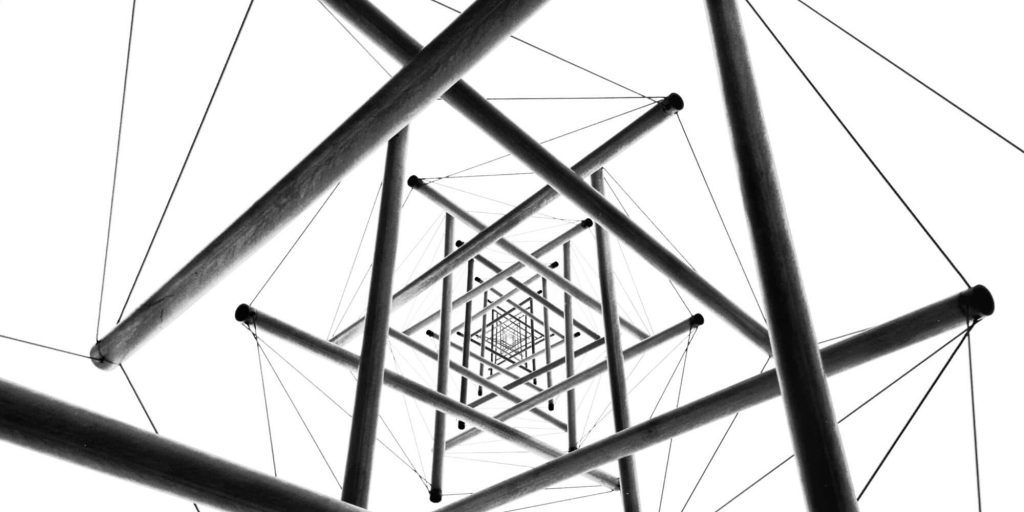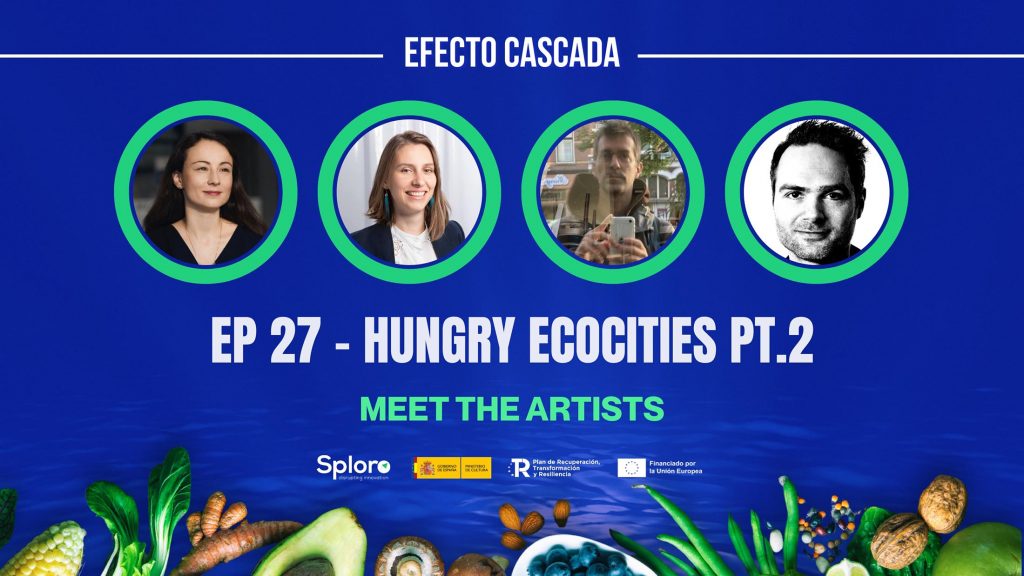Experience Readiness Level: Navigating IoT and Arts in a New Digital World
Today, we stand on the edge of a new era, powered by 5G, Industrial IoT and quantum computing. The challenge for the European Parliament, and for the whole of Europe, is to go further.
To help industry stay focused on human-centric economic progress, leading scientists have proposed that Europe adopts a formal policy approach to benchmark the human element of technology, what they call an ‘Experience Readiness Level, or ERL – to ensure that technology is always evaluated from a human perspective.
Technology Readiness Level – TRL – is a well-known tool used to describe the maturity of a technology. It was used as part of the Internet of Things, Large-Scale Pilots of the European Union. The programme developed the new concept of ERL, as result of cooperation between the Large-Scale Pilots and STARTS – the Science Technology and Arts Initiative of the Digital Single Market of the European Union.
By adopting Experience Readiness Level, the EU can ensure that the Digital Single Market puts humans at the centre.
On this 21st Century voyage of discovery, the European Parliament’s ITRE Committee is standing front and centre, advancing this new, digital future.
The EU must deploy large scale projects quickly, or we’ll miss the next tech wave carrying us into the ‘New Digital Era’, writes Eva Kaili.
Eva Kaili MEP is Chair of the Future of Science and Technology Panel in the European Parliament
Chaos theory. That matrix of wannabe randomness and complex systems, underlying patterns and interconnectedness. With more constant feedback loops and repetition than a celebrity Instagram post, it’s a theory structured around self-similarity, fractals, and self-organization.
Now that we’ve seen the unfolding global layers of COVID-19, we get that our society doesn’t come with a neat IKEA self-assembly guide, and yet, Europe is ‘rebuilding better’ – at least, that’s the ambition.
There is artistry in chaos – chaos is part of nature, with limitless outcomes, multiple interpretations, and many solutions to seemingly insurmountable problems. The freedom to create, when starting from chaos, stimulates curious minds.
To rebuild better and sustainably, we need creativity, ingenuity, courage, determination and a new social, economic paradigm – Europe needs to creatively engage top-down and bottom-up with Internet of Things (IoT).
A top-down approach is fundamental to integrating interoperable IoT systems, allowing them to work seamlessly for the benefit of the end user, and the overall objectives of the application. A bottom-up approach has to consider that the application of ‘intelligence to edge’ makes IoT useful and real, responding to actual, needs and better engaging citizens.
Large Scale Pilots
The EU must deploy large scale projects quickly, or we’ll miss the next tech wave carrying us into the ‘New Digital Era’ powered by varieties of IoT, Industrial Internet of Things, Internet of Things and Senses, Tactile Internet of Things and Artificial Intelligence of Things.
IoT is the economic accelerator which will underpin Europe’s economy, serving as an enabler for digitising industry, society, the green deal, and sustainability goals. The Economist Intelligence Unit reports that: “IoT will generate US$1.1trn in revenue for companies across the world by 2025 – almost 1% of projected global GDP… Businesses adopting IoT solutions typically see 20-30% efficiency gains in their operations.”
However, less than 50% of businesses are reported to have an active IoT project – which is unfortunate, because IoT has real life solutions to offer Europe’s citizens, not least in healthcare, where the remote monitoring of infected patients is possible, and not just the manufacture of medical devices. If COVID-19 has taught us anything, it’s that our interconnection is a vast, yet underpowered resource.
Collaborate & Accelerate
Europe needs to seek out collaborations with technical experts to understand how IoT may benefit their business and accelerate investment in new digital infrastructure and skills. This means preparing for how IoT adoptions by competitors could disrupt their sector; the integration art with tech can help creative innovators overcome disruption.
The IoT European Large-Scale Pilots Programme is addressing these aspects in a number of sectors, accelerating innovation through a new concept – Experience Readiness level (ERL) – to address technology readiness from the beginning of the IoT pilots phase and throughout.
With ERL, technology should now be assessed not just in terms of technological safety and maturity, but investors should also evaluate projects in terms of tech usefulness to Europe’s citizens to improve quality of life, safety, security and accelerate economic growth and prosperity.
Art & Technology
Complementing this approach is the innovation boosting collaboration of Europe’s arts and technology sectors – S+T+ARTS. The S+T+ARTS initiative remains a novel approach which introduces arts into innovation technology projects. Arts are leveraged as a tool to stimulate citizen’s curiosity, driving innovation, creativity, acceptance and imagination to advance the digital transformation process in Europe with more IoT applications and services, as well as more virtual and digital cyber experiences. S+T+ARTS means great implementation of our efforts for value creation by bringing together art and tech.
While users are often sceptical about technology usefulness and readiness, artistic intervention helps to explore innovation and challenge siloed thinking in the complex world of IoT. S+T+ARTS could and should be explored by the European Digital Innovation Hubs (EDIHs) in order to change mind sets and test unexpected innovative ideas and new business models.
Europe’s Green Deal
The IoT sphere is at the centre of the digital transformation – it is the source of much of the new data collected at the edge, which fuels AI, our economy and society. IoT is also indispensable when looking at how to meet the UN Sustainable Development Goals and European Green Deal if we want to dramatically increase energy efficiency, reduce pollution in cities or improve efficiency and availability of healthcare.
The EU’s COVID-19 recovery plan is therefore a clear opportunity to incorporate good practice from IoT deployments. The COVID crisis accelerated use of digital integration in our daily activities. If we are to ‘rebuild better and sustainably’ then we must focus clearly on our digital horizon, knowing we are at the edge of a new era, fueled by AI, intelligent connectivity, 5G and beyond, IoT technologies, edge and quantum computing. The challenge for the European Parliament, and for the whole of Europe, is to go further, faster but not neglecting that any Green-digital advancement must have a human centric approach as this is the quality that Europe needs to promote in order to lead by setting global standards for AI 4 good.
Easily said than done, for sure.
So, we have to recognize that binding the Internet of Things, smart data and the arts, is a process of experimentation – a catalyst for engineers to think big and differently; a springboard for older industries towards a brighter future.
By putting the arts within the technological paradigm, we are turbo-charging Europe’s industrial engine, fueling an accelerator for innovation – and as European Commission President, Ursula von der Leyen said, “[It is] time for what distinguishes human beings. Time for what computers can’t do: empathy and creativity.”
Human-centric Tech
By adopting the Experience Readiness Level framework, the EU can ensure that the Digital Single Market puts humans at the centre. We must learn from the COVID-19 pandemic, for it it is evident how a human-centric approach to applications for medical care, smart and clean mobility and agriculture is needed to secure out wellbeing.
Europe’s overall goal is to lead a digitisation strategy building on new IoT products, services, experiences and markets as part of the Digitizing European Industry strategy. Avoiding data silos, avoiding fragmentation of standards and establish a thriving IoT ecosystem where open platforms and solutions are used across vertical silos and help developers’ and user communities to innovate across the board.
Tech Boosting Climate
Europe needs the Internet of Things to meet the UN’s Sustainable Development Goals. So, avoiding data silos and providing data sharing mechanisms and infrastructure is essential; the Next Generation Internet initiative proposed under the new Horizon Europe programme, is capable of achieving dependable IoT intelligent connectivity by closely building on edge computing, AI, distributed ledger technologies, 5G and 6G evolution.
The Internet of Things and the emerging Industrial Internet of Things, Internet of Things and Senses, Tactile Internet of Things and Artificial Intelligence of Things can help companies navigate the current crisis and emerge stronger once operations ramp up again.
Bold, tightly integrated digital strategies are the most effective approach to digital transformations and economic growth to help companies automate processes, track and manage assets remotely, create new contactless user experiences, while improving sales, cost efficiency and sustainability.
This COVID crisis demands boldness and learning at scale. Either we rebuild better, or Europe’s digital markets will be left behind in a global competition for AI dominance.
Articles originally published in euractiv.com on June 26th (first part) and June 29th 2020 (second part).


